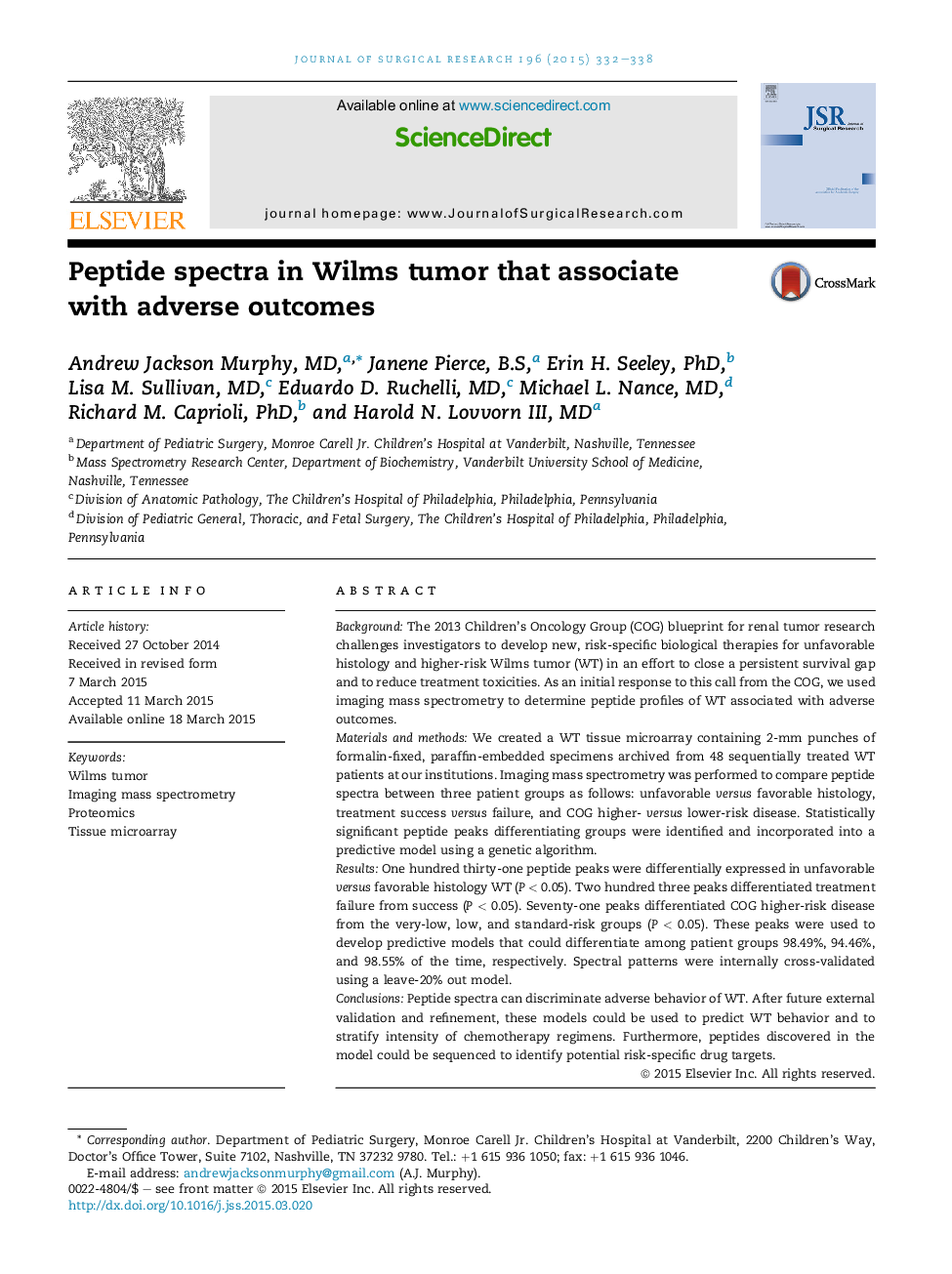| کد مقاله | کد نشریه | سال انتشار | مقاله انگلیسی | نسخه تمام متن |
|---|---|---|---|---|
| 4299649 | 1288397 | 2015 | 7 صفحه PDF | دانلود رایگان |

BackgroundThe 2013 Children's Oncology Group (COG) blueprint for renal tumor research challenges investigators to develop new, risk-specific biological therapies for unfavorable histology and higher-risk Wilms tumor (WT) in an effort to close a persistent survival gap and to reduce treatment toxicities. As an initial response to this call from the COG, we used imaging mass spectrometry to determine peptide profiles of WT associated with adverse outcomes.Materials and methodsWe created a WT tissue microarray containing 2-mm punches of formalin-fixed, paraffin-embedded specimens archived from 48 sequentially treated WT patients at our institutions. Imaging mass spectrometry was performed to compare peptide spectra between three patient groups as follows: unfavorable versus favorable histology, treatment success versus failure, and COG higher- versus lower-risk disease. Statistically significant peptide peaks differentiating groups were identified and incorporated into a predictive model using a genetic algorithm.ResultsOne hundred thirty-one peptide peaks were differentially expressed in unfavorable versus favorable histology WT (P < 0.05). Two hundred three peaks differentiated treatment failure from success (P < 0.05). Seventy-one peaks differentiated COG higher-risk disease from the very-low, low, and standard-risk groups (P < 0.05). These peaks were used to develop predictive models that could differentiate among patient groups 98.49%, 94.46%, and 98.55% of the time, respectively. Spectral patterns were internally cross-validated using a leave-20% out model.ConclusionsPeptide spectra can discriminate adverse behavior of WT. After future external validation and refinement, these models could be used to predict WT behavior and to stratify intensity of chemotherapy regimens. Furthermore, peptides discovered in the model could be sequenced to identify potential risk-specific drug targets.
Journal: Journal of Surgical Research - Volume 196, Issue 2, 15 June 2015, Pages 332–338